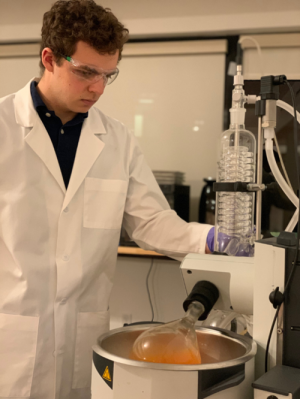You can now feel how historical texts smell. Smells of texts like central African gospel and Iliad's oldest known text on hawara papyrus have been recreated for the 2020 Bodleian Library's 'Sensational Books' exhibition.
When Roger Michel, founder and executive director of UK's Institute for Digital Archaeology, smelled a 1217 copy of Magna Carta, there was not much impression on him the first time. After giving some rest to his nostrils over lunch, he had a second sniff of the text and experienced something totally different.
He also took a sniff of hawara papyrus and told ABC RN's Late Night Live: "It was stored under an Egyptian mummy's head for thousands of years and so was very redolent of the pine resin and the other components of the Egyptian embalming fluid."
It had the "most extraordinary and complex smell-scape," he said adding that smelling Magna Carta was like smelling the most expensive wine in the list, reports ABC.

Museum of Book Scents
All these scents are captured from the Institute of Digital Archaeology from antique books, dating back to the 13th century, from Oxford University's Bodleian Library to the New York Public Library. Now, these scents are part of the institute's Sensational Books exhibition.
Other rare books include Edmond Malone's First Folio, James Madison's copy of the Federalist Papers and JRR Tolkien's collections among others.
Michel said that focusing on visitors' visual experiences, along with other senses like smell, can reveal a complete picture. He cites the odorous "smell-scape" of London around the 19th-century which led to the personal deodorant and revising of the city's sewerage system.
Rare books curator from Bodleian Library, Madeline Slaven, gave the idea of all five senses in the book exhibition says, Michel. These scents can also hint how these books were made, including the type of paper, ink and bindings used in different eras, revealing details about their owners too.
The exhibition includes books from C.S. Lewis' private collection, having a hint of his cigars; books with molasses scent from the Boston Molasses Flood; and also Shakespeare editor Edmond Malone's First Folio of Bard's plays, having the scent of his pipe.
Extracting Book Scents

Each book is placed for 72 hours in a sealed chamber, as highly purified air gets filtered. The remaining air in the chamber is sent via many filters that capture particulates from the book. Food science engineers remove and test these filters to find their chemical composition.
After the analysis they are turned into a paste, says Michel. Using high-power centrifuges having 20,000 times the G-force of a rocket taking off, they extract the pure essence of the book smells.
Only the exhibition's initial visitors can experience the book's original molecules, such as fresh ones lifted from the Magna Carta or Shakespeare's first folio. Once the composition is identified, the museum has to synthesize odors, in the future.
Due to COVID-19, the event has been postponed but the original scent extractions are "deep-frozen" and ready to be inhaled next year, said Michel.









